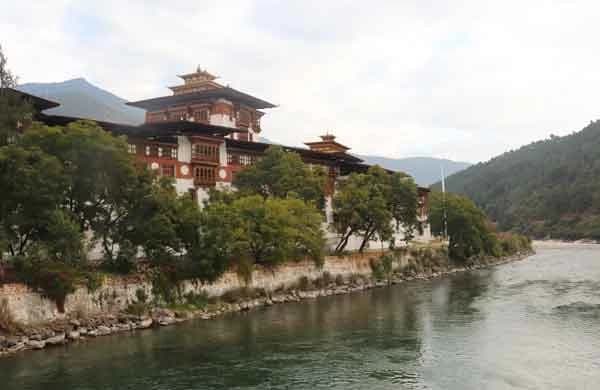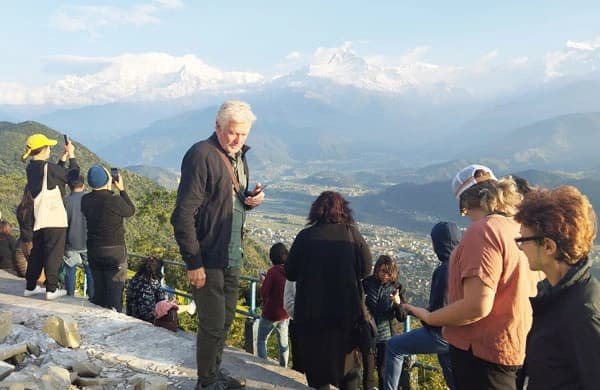Mani Rimdu Festival Trek Overview
Mani Rimdu festival is celebrated to mark the victory of Buddhism over the Bon religion, which was the predominant religion in the region before Buddhism arrived. From Lukla (2,860 m), the trek heads towards the Tengboche monastery (3,860 m), one of the region's most significant monasteries.
Mami Rimdu Festival trekking is challenging but rewarding, as it offers stunning views of the Himalayan peaks, including Mount Everest (8,849 m), Lhotse (8,516 m), Ama Dablam (6,812 m), Thamserku (6,608 m), and Nuptse (7,861 m).
Of course, the highlight of the Mani Rimdu festival trek is the festival itself. The festival is celebrated in the Tengboche monastery and attended by hundreds of Sherpas and other local communities from the surrounding villages.
The festival is a vibrant and colorful affair. The monastery is decorated with colorful prayer flags and intricate Buddhist artwork. Traditional dances, including the 'cham' dance, are performed by monks in colourful masks and costumes. The festival also includes the 'empowerment' ceremony, in which the head lama blesses and empowers the attendees.
Mani Rimdu festival Tour is about more than just the festival, though. It is also an excellent opportunity to experience the Sherpa culture and lifestyle. The trek passes through several traditional Sherpa villages, where you can interact with the locals and learn about their way of life. You can also visit local monasteries and see traditional Sherpa architecture, which is unique to this region.
In conclusion, the Mani Rimdu festival trek is a fantastic opportunity to witness a unique and vibrant cultural festival, experience the Sherpa way of life, and see some of the most breathtaking mountain views in the world. If you are looking for a challenging and rewarding trekking experience, the Mani Rimdu festival trek should be on your bucket list.
Mani Rimdu Festival Trek Highlights
- Mani Rimdu Festival Trek is an incredible way to experience the cultural and religious traditions of the Sherpa people
- You will participate in one of the auspicious festivals of the Khumbu community, including the Sherpas and Mani Rimdu festival
- Opportunity to witness the colourful Chham dance, as well as the other rituals and ceremonies that take place over the three days of the festival
- Follow an adventurous trail to Tengboche village through the heart of the Himalayas
- Trek through beautiful rhododendron forests, crossing rushing rivers and fine villages
- Visit traditional Sherpa villages to learn about their unique culture and traditions
- Panoramic views of Mount Everest and other Himalayan peaks, along with diverse landscapes
Mani Rimdu Festival trekking Attractions
Mani Rimdu Festival is a traditional Sherpa festival celebrated in the Himalayan region of Nepal. Here are some history, story, and significance of this festival:
Mani Rimdu Festival History
Mani Rimdu festival originates in Tibetan Buddhism, which Guru Rinpoche introduced to the Sherpa people in the 16th century. The festival is held in the Tengboche Monastery, located in the SoluKhumbu district of Nepal, which was founded in the 17th century by Lama Sangwa Dorje.
The story behind the Mani Rimdu festival
Mani Rimdu festival celebrates the victory of Buddhism over the ancient Bon religion in Tibet.
It also commemorates the birthday of Guru Rinpoche, who is believed to have brought Buddhism to Tibet. The Mani Rimdu festival is a three-day event, and each day has its significance and rituals. On the first day, monks perform the "Wong" ceremony, which involves offering grains and prayers to the gods.
The second day is the most important day of the festival and is marked by the "Chham" dance, a masked dance that tells the story of Buddhism's triumph over Bon. The third day is marked by the "Ser-Kyem" ceremony, where the monks offer prayers and libations to the deities.
Significance of Mani Rimdu Festival
Mani Rimdu festival is an important cultural and religious event for the Sherpa people and attracts visitors from around the world. The festival allows Sherpa people to unite and celebrate their shared cultural heritage. The Chham dance, performed on the second day, is considered a powerful blessing and is believed to protect the community from harm.
The festival is also an opportunity for the monks of Tengboche Monastery to reaffirm their commitment to the Buddhist faith and to continue their predecessors' work in spreading the Buddha's teachings.






